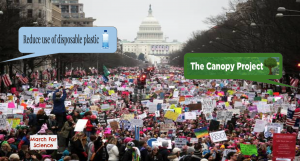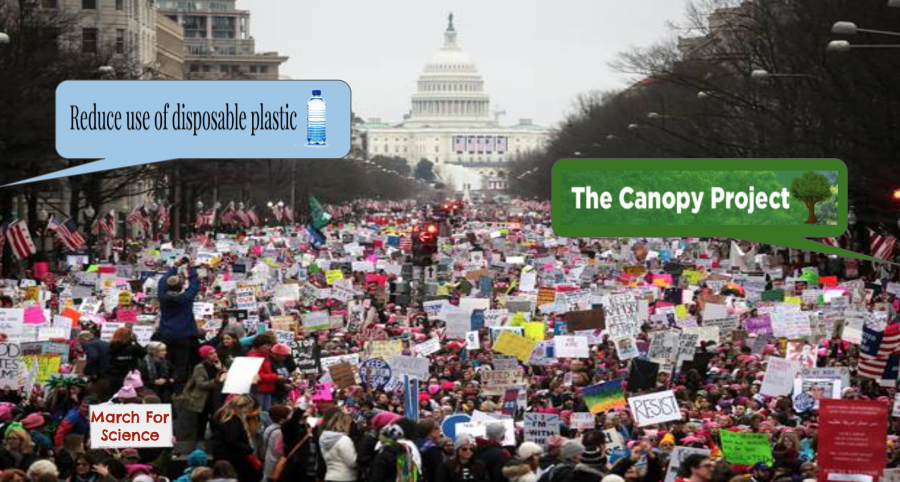A worldwide celebration will take place April 22 to encourage citizens of the world to support planet Earth. United States Senator of Wisconsin Gaylord Nelson created Earth Day 47 years ago to call social and political attention to pressing environmental issues. As a result, organizations across the country came together to work towards preserving the planet.

Karina Badey ’19 and Juliana Collins ’19
One of these organizations includes The Earth Day Network (EDN). When Gaylord Nelson established the EDN in 1970, the corporation inspired 20 million Americans to take action during its debut year, according to earthday.org. Since this date, the organization has only improved, encouraging thousands of individuals to better the environment. The organization itself has marshaled campaigns such as the March for Science, Canopy Project, and a mission to reduce the use of disposable plastic.
As the earth is currently losing approximately 15 billion trees each year, the EDN plans to plant 7.8 billion trees and create a trending hashtag #Trees4Earth to raise awareness, according to earthday.org. The EDN has made planting a tree easier than ever through the Canopy Project, according to donate.earthday.org.
Through its website, anyone can donate $1 to plant one tree. These contributions will help the Canopy Project accomplish its goals for planting trees this Earth Day. This project allows Sacred Heart Greenwich students the opportunity to get involved in the program and help spread awareness of the Canopy Project.
“I am planning to donate to this project because I feel that it is time I truly get involved in environmental efforts. Taking AP Environmental Science has shown me that simply learning about these issues is not enough to enact the change necessary to better our climate. I would love if more Sacred Heart girls got involved in this project as well,” senior and AP Environmental Science student Lindsay Ofori said.

Courtesy of spectrumnews.org
While Sacred Heart students and the EDN are working towards making a change, there are still considerable issues concerning the health of the planet. In recent years, there has been a spike in the disposal of plastic. For example, from 2002 to 2012, humans produced more plastic than they did in the entire 20th century, according to earthday.org.
Disposable plastic is often used in commonplace objects such as water bottles, grocery bags, and food trays, according to earthday.org. Since plastic does not biodegrade, the plastic waste continues to grow exponentially. As a result, the problem of plastic waste is far from diminishing.
“In 7th grade, I started making a conscious effort to use reusable water bottles because of the issue with plastic pollution and now as a senior, I still continue the practice and have gotten my family and closest friends to do it too,” Lindsay said.
Additionally, the EDN’s March for Science will take place April 22. Scientists hope that the March for Science garners the same amount of support as the recent Women’s March on Washington which attracted about 470,000 people, according to nytimes.com.
The March for Science’s mission showcases the EDN’s movements for Earth Day and will present everyday methods for society to reduce its footprint on the earth.
“I think their mission statement is admirable and is an important first step to changing the course of our planet. I love the global aspect of this project because environmental efforts truly transcend borders,” Lindsay said.
– Karina Badey and Juliana Collins, Staff Writers
Categories:
Sacred Heart students plant seeds of success this Earth Day
April 21, 2017
The Earth Day Network takes an initiative to raise awareness this Earth Day.
Karina Badey ’19 and Juliana Collins ’19
0


